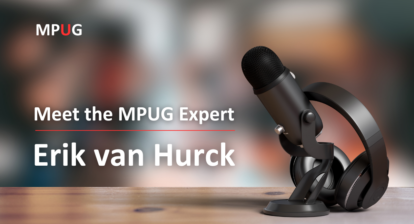The capabilities and versatility of Project Desktop are indisputably extensive. An integral part of the Microsoft ecosystem, this tool offers an impressive array of functions that have continued to evolve since it made its transition from DOS to Windows. Despite the advent of SharePoint, Office 365, or more comprehensive enterprise project management environments, Project Desktop has remained a mainstay.
One of the most frequently asked questions concerns the future of Project Desktop: Is it going to be phased out? The answer to this question is a resounding no. The Project Desktop continues to be a powerful tool in the realm of resource management and project execution, so much so that Fortune 100 companies were relying on it long before enterprise environments were even conceived. This shows the continued relevance and power of Project Desktop in managing workflows effectively.
Why Microsoft Project is Here to Stay
But why is Project Desktop here to stay? One of the major reasons is its resource management capabilities, which are akin to a sophisticated booking tool. It provides a comprehensive environment for resource assignment, work modeling, and tracking.
The resource management capabilities of Project Desktop set it apart from other project management tools. It offers a robust and refined system for resource allocation, skill tracking, and workload distribution. The tool’s integration with the Microsoft ecosystem and its extensive customization options further enhance its capabilities, making it a preferred choice for organizations that prioritize efficient resource management and project execution.
This is not just conjecture. Companies such as General Electric and Microsoft themselves extensively use Project Desktop for their complex project planning and resource management. Microsoft, for example, uses it to align resources with projects, identify potential bottlenecks, and adjust timelines for optimal efficiency. Similarly, General Electric employs Project Desktop to coordinate global teams, ensuring smooth progress across various stages of product development.
Licenses like Plan 3 or Plan 5 grant users of Project Desktop access to the entire Project Online environment, enhancing its utility and appeal. This integration between Project Desktop and Project Online provides several benefits:
- Real-time Data Synchronization: The integration allows for seamless data synchronization between Project Desktop and Project Online. Changes made in one environment are automatically reflected in the other, ensuring that project data remains up to date. This real-time synchronization enables project managers and team members to access the most current information regardless of whether they are using Project Desktop or collaborating in the cloud-based Project Online environment.
- Collaborative Work Management: Project Online offers collaborative features that facilitate effective teamwork and communication. Users can share project plans, assign tasks, and track progress collaboratively. Team members can update their task statuses, provide comments, and share project-related documents in a centralized workspace. This collaborative work management capability improves coordination, streamlines communication, and enhances overall project efficiency.
- Enhanced Reporting and Analytics: The integration with Project Online expands the reporting and analytics capabilities of Project Desktop. Project Online provides powerful reporting tools, customizable dashboards, and advanced analytics features. Project managers can generate insightful reports, track key performance indicators, and gain valuable project insights. These enhanced reporting capabilities enable data-driven decision-making, better project oversight, and improved project performance.
- Access to Additional Project Management Features: Project Online offers a range of additional project management features beyond what is available in Project Desktop alone. These features include portfolio management, demand management, resource engagement, and more. By gaining access to the full Project Online environment, users can leverage these advanced features to enhance their project management processes, align projects with organizational goals, and optimize resource allocation.
- Scalability and Cloud-Based Benefits: Project Online operates in the cloud, providing scalability and flexibility to accommodate growing project portfolios. The cloud-based nature of Project Online allows for easy access to project data from anywhere, facilitating remote collaboration and enabling distributed teams to work seamlessly. It also eliminates the need for extensive infrastructure setup and maintenance, reducing IT overhead and ensuring a reliable and secure project management environment.

Beyond Resource Management: The Versatility of Project Desktop
Beyond its resource management prowess, Project Desktop’s versatility is another reason for its enduring appeal. The tool can handle an array of project management needs, from managing personal, project, and departmental calendars, to identifying task overallocation and supporting multiple task assignments. Advanced features like contouring or grid-based work splitting further demonstrate its adaptability and power.
So, what does the future hold for Project Desktop? With its ongoing evolution and the unique blend of power, versatility, and resource management capabilities, it’s safe to say that Project Desktop is here to stay. As we move forward into the future of project management, we’ll continue to see the tool adapt to new challenges and opportunities, reinforcing its place in the Microsoft ecosystem and beyond.
This article contains highlights from Tim Runcie’s webinar – Best Practices for Managing Resources and Workload with Microsoft Project Desktop – being provided by MPUG for the convenience of our members. You may wish to use this transcript for the purposes of self-paced learning, searching for specific information, and/or performing a quick review of webinar content. There may be exclusions, such as those steps included in product demonstrations, or there may be additions to expand on concepts. You may watch the on-demand recording of this webinar at your convenience.







